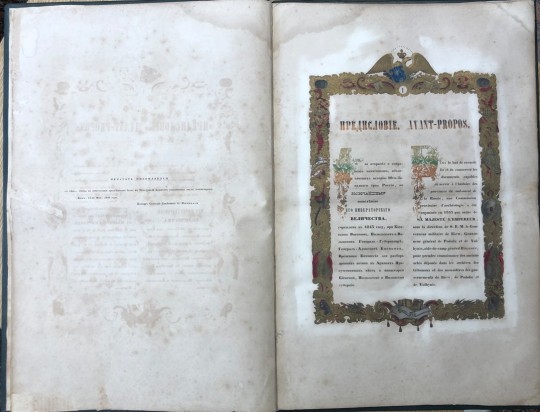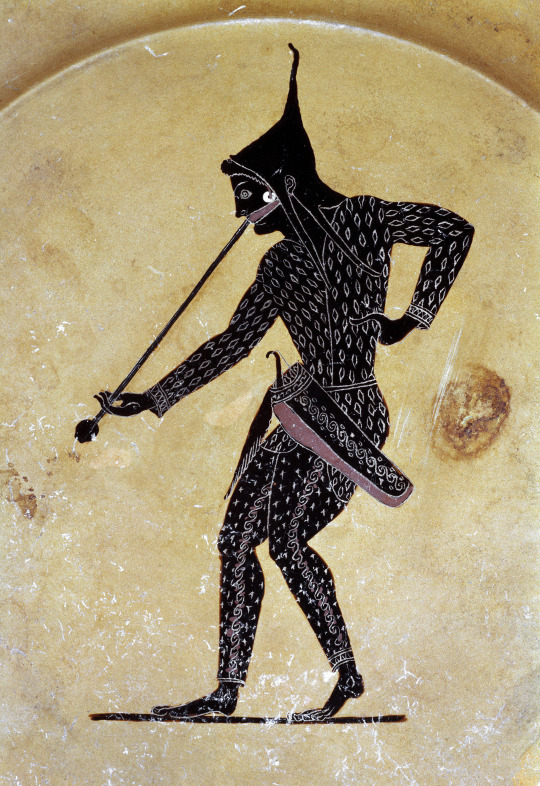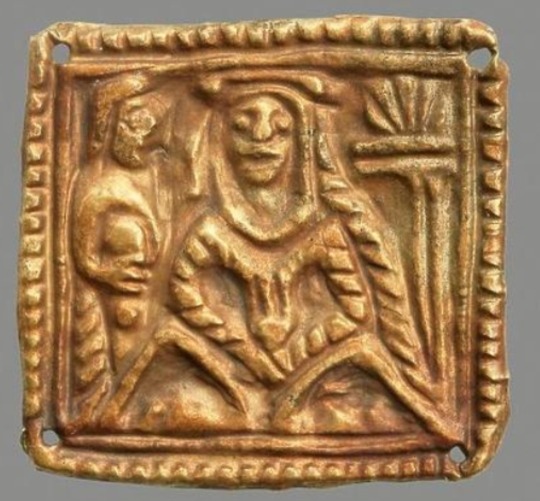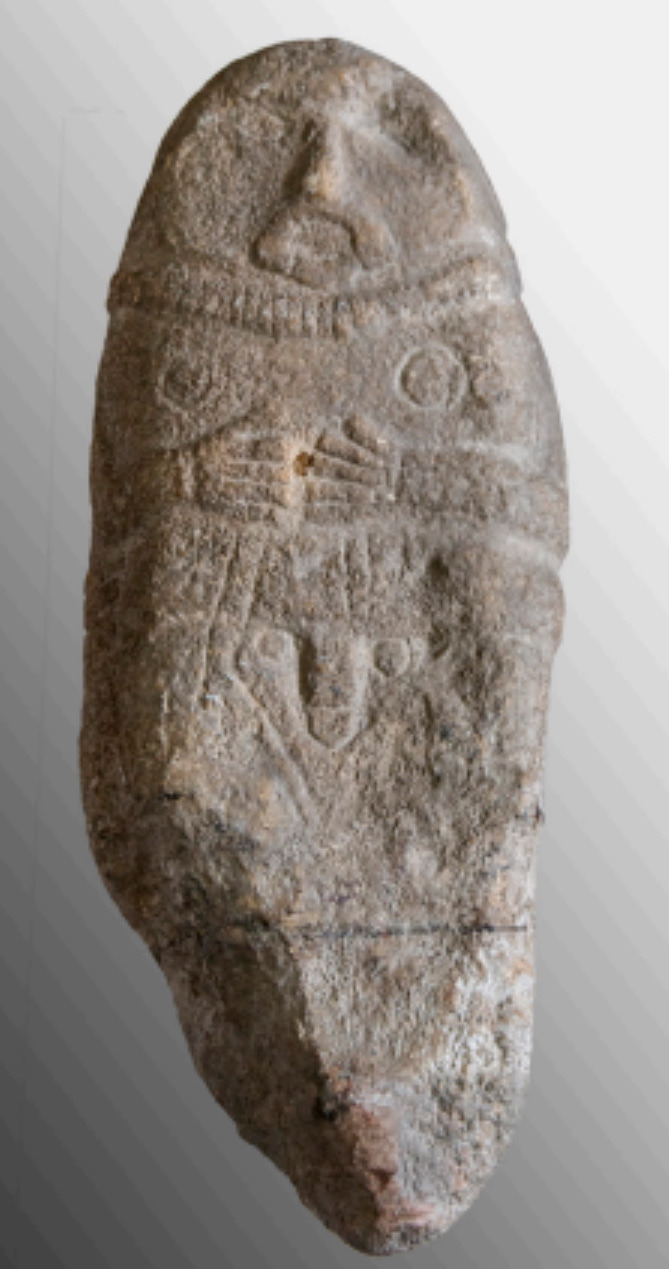#Scythians
Explore tagged Tumblr posts
Text
2,300-Year-Old Plush Bird from the Altai Mountains of Siberia, c.400-300 BCE: this figure was crafted with a felt body and reindeer-fur stuffing, all of which remains intact

This plush bird was sealed within the frozen barrows of Pazyryk, Siberia, for more than two millennia, where a unique microclimate enabled it to be preserved. The permafrost ice lense formation that runs below the barrows provided an insulating layer, preventing the soil from heating during the summer and allowing it to quickly freeze during the winter; these conditions produced a separate microclimate within the stone walls of the barrows themselves, thereby aiding in the preservation of the artifacts inside.
This is just one of the many well-preserved artifacts that have been found at Pazyryk. These artifacts are attributed to the Scythian/Altaic cultures.
Currently housed at the Hermitage Museum.
#archaeology#anthropology#history#artifact#artifacts#siberia#scythians#archeology#museum#amazing#interesting#stuffed animals#ancient history#prehistoric#crafting#felt art#art#prehistoric art#hermitage museum#human nature
71K notes
·
View notes
Text

Vasily A. Prokhorov, 1881: Skeleton of a Scythian queen and her jewelry, found in the Chertomlyk barrow, near Nikopol, Katerynoslavsk Governorate (today, Ukraine).
420 notes
·
View notes
Text

Bronze top in a shape it tree of life with tha figure of god Papai, Scythian, 4th cent. BCE, Nikopol, Dnipro region, Ukraine
#art history#art#ukraine#ukrainian art#artwork#support ukraine#history#ukrainian history#ancient history#scythians#scythian
99 notes
·
View notes
Text

Campanian/Etruscan small bronze statue depicting a Scythian archer and his horse. The archer is removable. The horse is a piece meant to be placed atop an urn.
5th Century BCE. Currently in the Metropolitan Museum of Art.
#art#culture#history#ancient culture#ancient art#ancient history#scythians#scythian#campania#campanian#etruscan#military history#the metropolitan#the met#the metropolitan museum of art
114 notes
·
View notes
Text

There are 4 mounds and 3 settlements on the territory of the Fastivtsi village council (Kyiv region) that are under state protection. The most famous of them are Perepiat and Perepyatikha. These are archaeological monuments of the 5th century BC.

In June-August 1846, Taras Shevchenko participated in the second archaeological expedition that excavated the Perepiat mound and was a staff artist.

Taras Shevchenko's drawings were included in the magnificent edition of the Album about the excavations of the Perepiat mound.
#Ukraine#archaeological#Scythians#Kobzar Library#antique books#book review#rare books#taras shevchenko#kobzar
51 notes
·
View notes
Text

Scythian Archer on a Greek Vase, 520-500 BCE Made in: Attica (Greece) Excavated in Vulci
#art#scythian#scythians#archer#greek#greece#cradle of civilization#southern europe#fine art#european art#classical art#europe#european#classic art#male#oil painting#fine arts#mediterranean#europa#attica#vulci#phrigian cap
273 notes
·
View notes
Text

siberian ice woman mummy tattoo
21 notes
·
View notes
Text
youtube
4th Century BC Scythian Gear
from Full Tilt Jousting
85 notes
·
View notes
Photo

“Women were included in the ranks of this fully mobilized society. Prokopios, aware, of course, of the legends of the Amazons whose origins he traces to the region of the Sabirs, reports that in the aftermath of "Hunnic" (i.e. Sabir) raids into Byzantine territory, the bodies of women warriors were found among the enemy dead. East Roman or Byzantine sources also knew of women rulers among the nomads. Malalas, among others, mentions the Sabir Queen Boa/Boarez/Boareks who ruled some 100,000 people and could field an army of 20,000. In 576 a Byzantine embassy to the Turks went through the territory of 'Akkayai; "which is the name of the woman who rules the Scythians there, having been appointed at that time by Anagai, chief of the tribe of the Utigurs." The involvement of women in governance (and hence in military affairs) was quite old in the steppe and was remarked on by the Classical Greek accounts of the Iranian Sarmatians. It was also much in evidence in the Cinggisid empire.
These traditions undoubtedly stemmed from the necessities of nomadic life in which the whole of society was mobilized. Ibn al-Faqih, embellishing on tales that probably went back to the Amazons of Herodotos, says of one of the Turkic towns that their "women fight well together with them," adding that the women were very dissolute and even raped the men. Less fanciful evidence is found in the Jiu Tangshu which, s.a. 835, reports that the Uygur Qagan presented the Tang emperor with "seven women archers skillful on horseback.” Anna Komnena tells of a Byzantine soldier who was unhorsed with an iron grapple and captured by one of the women defenders as he charged the circled wagons of the Pecenegs. Women warriors were known among the already Islamized Turkmen tribes of fifteenth century Anatolia and quite possibly among the Ottoman gazfs (cf. the Bacryan-z Rum "sisters of Rum")”.
Golden Peter B., “War and warfare in the pre-cinggissid steppes of Eurasia” in: Di Cosmo Nicola (ed.), War and warfare in Inner Asian History
#history#women in history#warrior women#warriors#Akkayai#6th century#historyedit#historyblr#central asia#scythians#sarmatians
77 notes
·
View notes
Text

Scythians, tapestry by Lileia Kvasnytsia-Ambitska, 1990
36 notes
·
View notes
Text
Male archeologists/historians are dumb af like they can discover a culture where only women are buried with riches depicting WOMEN ON THRONES BUSTING THEIR PUSSIES WIDE OPEN and men portrayed only as expendable resources in wars then being like ah yeah this is a patriarchy just like us ❤️

109 notes
·
View notes
Text

Ceramic of man and cow from the Kingdom of Khotan 7th-9th C. CE
"The origin of the name "Hephthalites" is unknown, it may stem either from a Khotanese word *Hitala meaning "Strong", from hypothetical Sogdian *Heβtalīt, plural of *Heβtalak, or from postulated Middle Persian *haft āl "the Seven Al"
In the late 5th century CE they expanded eastward through the Pamir Mountains, which are comparatively easy to cross, as did the Kushans before them, due to the presence of convenient plateaus between high peaks. They occupied the western Tarim Basin (Kashgar and Khotan), taking control of the area from the Ruanruans, who had been collecting heavy tribute from the oasis cities, but were now weakening under the assaults of the Chinese Northern Wei dynasty. In 479 they took the east end of the Tarim Basin, around the region of Turfan.
When Khosrow I died in 579, the Hephthalites of Tokharistan and Khotan took advantage of the situation to rebel against the Sasanians, but their efforts were obliterated by the Turks."
-taken from Wikipedia
94 notes
·
View notes
Text

Top: beads of necklace, Scythian, 4th cen. BCE, Melitopol mound, Zaporizhzhia region, Ukraine
Bottom: "tattooed" Trypillian figurines, 4th millennium BCE
#from the national museum of the history of Ukraine#🧿#ukraine#ukrainian history#history#art history#art#scythians#scythian#scythian art#scythian jewellery#trypillya#trypillian culture#archaeology#trypillian archeological culture
35 notes
·
View notes
Text

Scythian Warrior. Sibioara, Romania.
6th to 5th Century BCE.
#culture#art#history#ancient culture#ancient art#ancient history#scythia#Scythians#archeology#Romania#sibioara
67 notes
·
View notes
Text
Was this guy Scythian? The buried horses sort of point in that direction. Whoever he was, he had a HUGE burial site.
16 notes
·
View notes
Text

The cheekpiece of a horse's bit from Scythia, 600s BCE. The Scythians, who ranged throughout southeastern Europe and central Asia, were considered to be expert horsemen -- and women (archaeologists have found many women's graves full of objects that indicate that they were horseback warriors).
{WHF} {Ko-Fi} {Medium}
151 notes
·
View notes